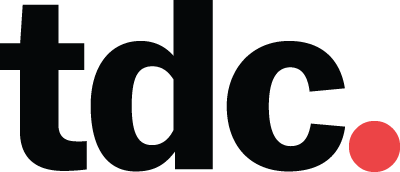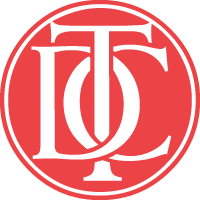Type Masters Week
by Steven Peter

From June 6 to June 10, 2011, the Type Directors Club and Font Bureau brought a week of workshops, lectures and a medal to New York City. The week started with Erik Spiekermann receiving the TDC medal. On Tuesday Erik Spiekermann’s workshop was about “What makes a good typeface?”, on Wednesday Cyrus Highsmith “Thinking in contours”, on Thursday Ale Paul “Lettering for the masses” and on Friday Luc(as) de Groot “Perceiving Type – Optical Mathematics”.
Following are the comments from some of the attendees:

What makes a good typeface?
Spiekermann kicked off the 4-day series of classes by immediately drilling down to the skeletal form of a typeface. Rather than address aesthetics the focus was on establishing clear and consistent form built on metrics, visual balance and flow.
We started with a look at the fundamental ratio of stroke width:height and reviewed some basics on type proportions, rules and exceptions.
After that we were assigned an exercise to build a grid – a key for a potential typeface indicating cap height, x-height, ascender and descender length, diagonal stroke angles etc.
I’m not really a type designer. I just like to draw letters. So this was a difficult way to begin for me (and I think quite a few others in the class). I typically draw letterforms until I have an idea I like, then try to construct a set of rules to support the design, transforming it from an alphabet into a typeface. It was challenging to imagine what the proportions should be without drawings letters first.
The struggle reinforced how vital it is to begin with a clear idea and a set of rules. I found this same concept restated two days later in Alejandro Paul’s class. In developing a wordmark Ale had us draw skeletal forms. I thought I needed to include the swashes and ornaments I was imagining in the final design. But Ale pushed me back to the core stroke shape, without embellishment or even contrast. This clarified my intentions and produced a more confident final form.
In this same way in the Spiekermann class I was forced to look more intently at the fundamental form I was trying to create — to build a skeleton first, then musculature; all this before adding the surface aesthetics.
Spiekermann himself was engaging and accessible. A very lively and entertaining class that helped me focus on an area I had under-emphasized previously.
Joe Newton
Head of Type, Veer

Thinking in contours
The blind contour drawing exercises that we did reminded me of my freshman year of art school. Even for an experienced student such as myself, it was great to be reminded of the basic drawing lessons and theory that Cyrus covered in this workshop. His approach and explanation of drawing in contour, i.e. figure-ground relationships, has been part of a growing epiphany for me. Mastering figure-ground relationships is essential to great type design. Cyrus is well deserving of the workshop series title, Type Master, a gifted teacher, and a great workshop conductor.
It is experiences like the ones at the TDC Type Master’s week that continue to renew my passion and interest in typography.
Terrance Weinzierl
of Monotype Imaging

Lettering for the masses
The TDC Masters week workshop was nothing short of a huge success. I had looked forward to the workshops as soon as they were announced. As a graduate student from Pratt Institute studying packaging design within the Communication Design program, I have found that Ale Paul’s workshop was extremely insightful. My initial reaction was, “Who would have thought the magic behind unique packages was custom lettering?”
In Ale’s class we not only had the pleasure of seeing the work he has done, but also create lettering of our own. He began the workshop with the question, “Why do packaging designers think that ‘Textile’ is a perfect font for packaging?” At the very first glance of this typeface ‘Textile’, I did not recognize it. As soon as he began to show us examples of some packages with the Textile font applied it automatically clicked where I have seen this typeface. The statement that really was engrained in me was when he stated, “Typography has less limits and can be more expressive in packaging.” That is when I had a personal private eureka moment in my mind! I began to think of all the wonderful possibilities I can create within my own designs in packaging. As the Ale continued to unravel the wonders behind packaging and typography, I jotted down lots of notes. Textile is a workhorse typeface for packaging design because of usability/legibility by having weight. What he also showed us was the obnoxious amount of effects applied to typefaces for packaging design. Adding effects is exactly what we should not rely on entirely. Recently, I have seen a tweet on twitter saying, “Every time someone uses drop shadow effect a puppy dies.” Despite my twisted sense of humor in this case, everything started to become much more clearly in terms of what needs to be done to improve typography on packages of any kind. Ale also mentioned how lettering should be appetizing, have a strong impact, mix of energy, and catch the idea of the consumer.
When designing lettering what should also be taken in consideration is having strong contrast between thick and thins to create harmony and balance. The characteristics from the upper and lower case must be linked together. In addition, ligatures are essential in designing a lettering typeface. What I loved about this class is that Ale created two rounds of critiques. We first picked a word that we wanted to create lettering for and then present it. I had selected the word, “Eat”. I’m drawn to food packaging so that was the first word that came to mind. After the first critique, I discovered how I was not allowing natural curves from hand movements in my design. Ale then divided us in pairs of two and has us work as a team to improve each other’s work. I was paired with Roberto De Viq and learned so much from his constructive criticism. The second critique Ale pointed out how far we both came on our choice of words to create lettering out of. I still need to work on that piece and then it can be a wonderful addition to my portfolio. In closure to sharing my wonderful and memorable learning experience, Ale Paul says, “Lettering should have a strong beginning and a strong ending.” This concept cannot only be applied to lettering but also the entire experience of all four workshops during Master’s Week. Type Directors Club has already begun a strong beginning with starting a program such as this one. I’m grateful to have been a part of it and learned so much!
Elisabetta Distefano
President of Risa Associates Inc.
I had the great pleasure of attending Paul Ale’s workshop that was a part of TDC’s “Masters of Type” week. I was really impressed by Paul’s direct and pleasant communicative style. As well as by his extensive and diverse experience on lettering and expressive typography. Paul went through several real-world case studies illustrating both successful and unsuccessful use of lettering and typography in the branding world, and he gave us all the opportunity to explore and utilize various expressive techniques of typography such as ligatures and splashes. Paul was great at encouraging all to participate, his critiques were productive, and he embellished the workshop with a splash of humor. Overall an amazing and inspirational workshop!
Rozina Vavetsi
Associate Professor, Graphic Design, New York Institute of Technology

Perceiving Type – Optical Mathematics
Morning dawned again far too early, and I found myself onboard the icy refrigeration of NJTransit inbound to Penn Station and the Type Master’s Week class by Luc[as] de Groot. Once I got some coffee flowing through my veins, the world began looking brighter.
Lucas (I’m going to dispense with the brackets) began with an overview of his work on the Microsoft ClearType project. The basics are outlined in Now Read This, but Lucas quickly went beyond the general overview into the nitty-gritty of the fonts, including the all-important, but highly arcane topic of hinting, which he showed on Macbook running OS X, Windows, and Mac OS 9!
Lucas then went into some of the finer points of spacing and optical adjustments, initially focussing on logotypes, but eventually showing how he spaces a font (based on scans from a recent class he taught). As with many font designers, I am almost entirely self-taught (aside from the TDC classes), and seeing a pro at work is a real eye-opener.
Then we were treated to the draft of a book Lucas is writing about on the optical mathematics of type. One of the tips he shared I’ve never seen before, and it led to an immediate and dramatic improvement of the typeface I’m currently working on. (You’ll have to wait for the book for the specific tip.) I posted a before-and-after shot on Facebook, and it’s the single most commented on post I’ve ever made.
The “project” we worked on was spacing a logotype. Virtually everyone in the class used their own typeface, so along the way, we managed to get in a critique as well! Every participant in the class got a good chunk of one-on-one time with Lucas, who even stayed late to make sure everyone got their turn.
This is the fourth class I’ve attended at the TDC, and every one has taken my design to the next level. Without exception, the teachers have been world-class and have been eager to pass along — guild-like — their knowledge to those fortunate enough to have attended.

